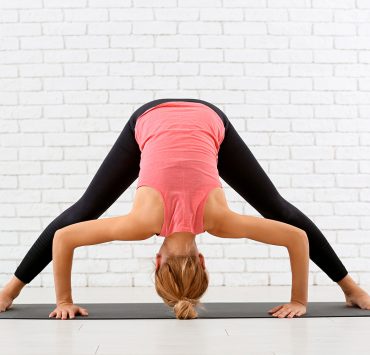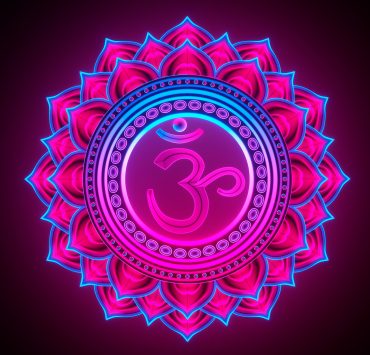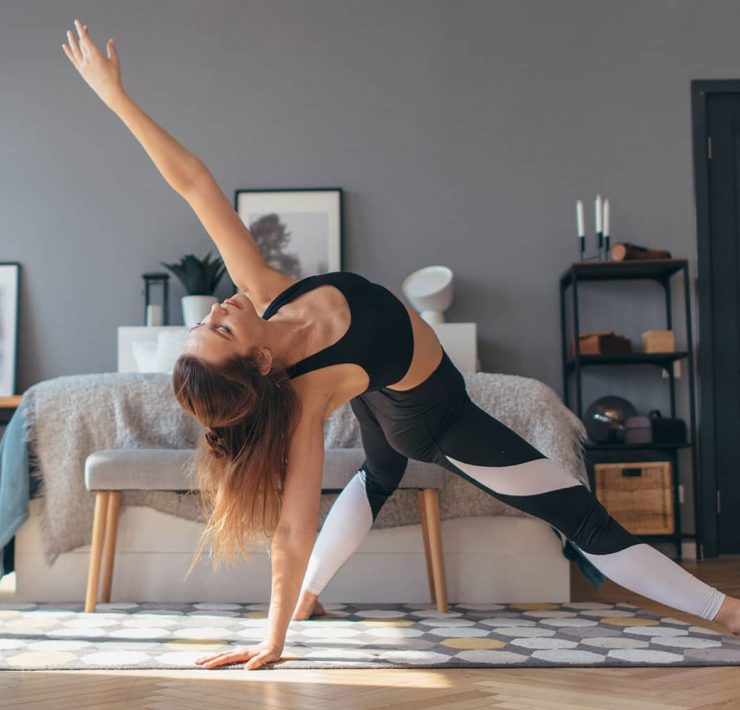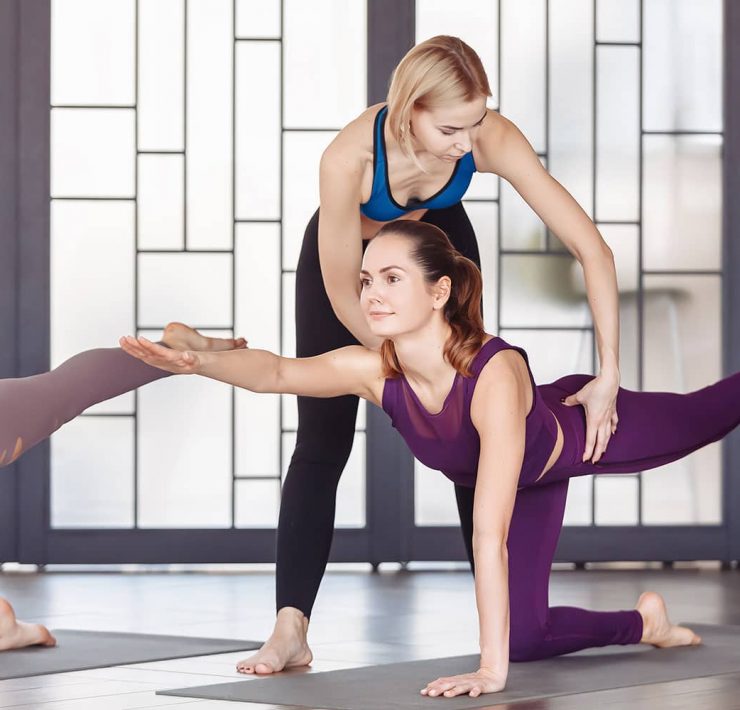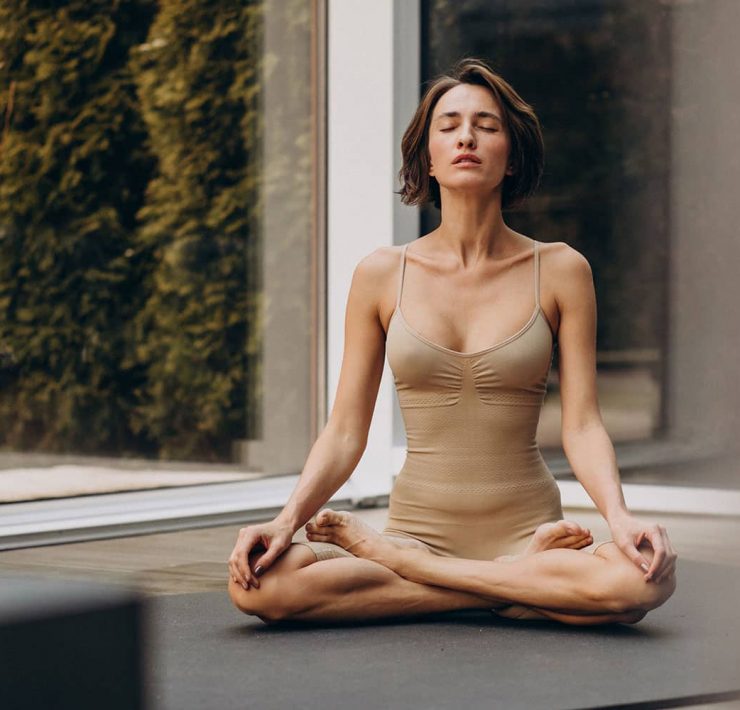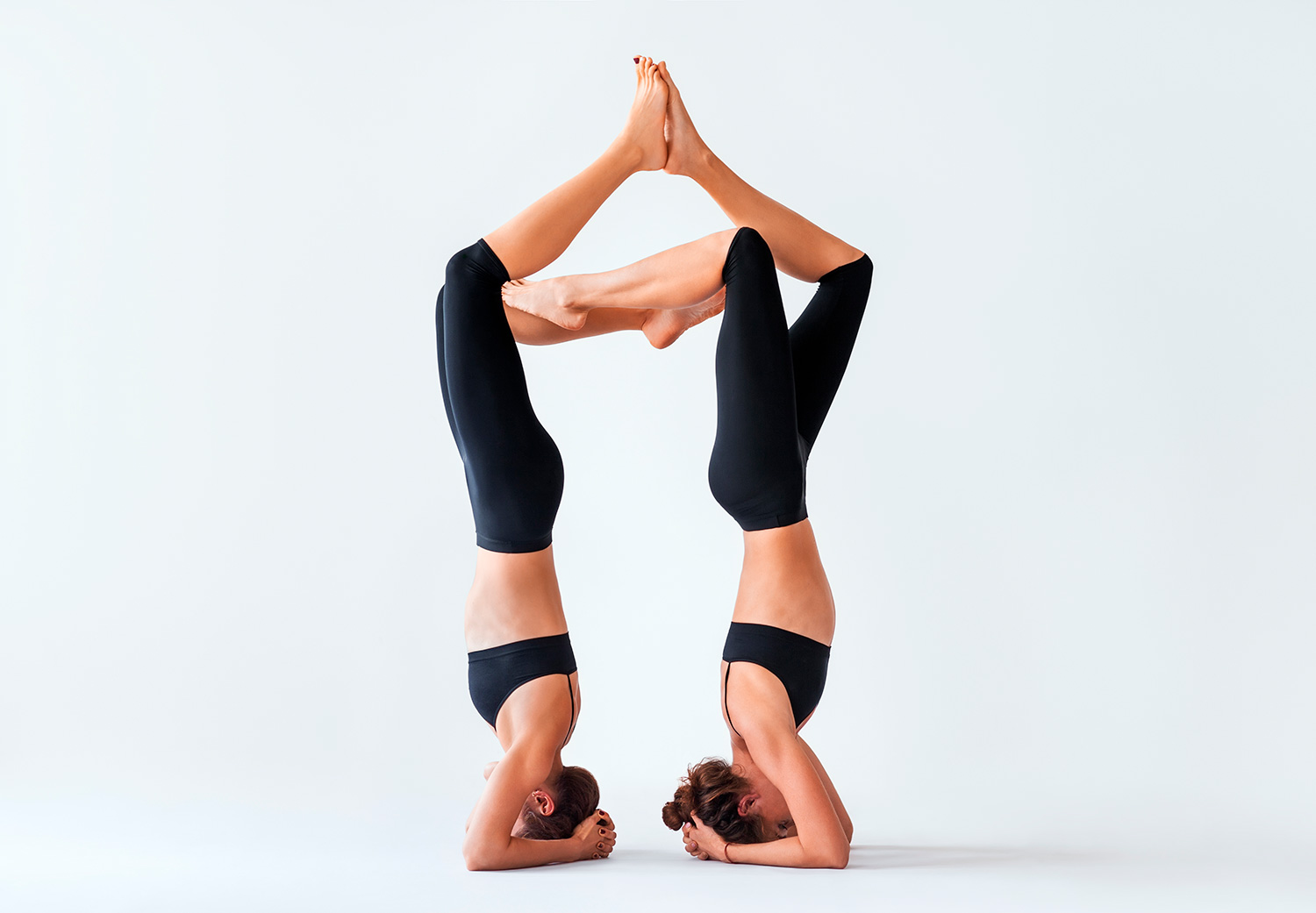
Having been a teacher’s assistant at over 50 yoga teacher…
Tantra yoga can be incredibly misunderstood in the western world. Tantra is often identified as a practice associated with sex, and can be considered taboo by people who don’t actually understand the true roots of the practice. While there is some element of truth to that association with sexual energy, the practice goes much deeper and expands far wider.
Tantra yoga is about enhancing your self-awareness and deepening your connection to your own energy and body. As you become more in touch with yourself, you encourage spiritual and physical growth and wellbeing. The practice doesn’t have to be done with a partner—it can be done individually, although tantra does encourage a deeper connection between people. While there is a level of intimacy tied to it, the practice is not purely sexual or physical. Tantra yoga brings together multiple sciences, spiritual practices, and styles of yoga to create a practical way for practitioners to access their highest potential and expand overall awareness.
Tantra: Definition, History, and Benefits
Tantric traditions in Hinduism root back to the first millenium, developing from Vedic, yogic, and meditation traditions. It is believed that it did not become a part of common practice until approximately the 4th century. Tantric traditions, however, are not only limited to Hinduism. Buddhist tantric traditions developed since the inception in the first millenium, as well as Jainism tantric traditions.
Since tantric traditions can be incredibly diverse and varied due to it spanning across multiple cultures, it can be difficult to give them a single definition. However, when looking at it in the context of tantra yoga, it is most commonly tied to the developments in Hinduism. Within Hindu tantric traditions, there are many schools of thought and lineages. At the center of these branches, however, is the idea of awakening kundalini energy and bringing the subtle body into a state of balance.
The word tantra breaks down to mean “to weave” or “to expand”. The tantra yoga practice brings together multiple yoga practices and spiritual teachings so that practitioners can connect with themselves and the universe. Tantra has roots in Hatha yoga, but brings in other styles as well, including Kundalini, Karma, Bhakti, and Raja, as well as elements and practices of Ayurveda, astrology, chanting, gemology, and more.
Connecting back to its definition, in tantra yoga, practitioners weave their practice into their everyday life. Rod Stryker, renowned Tantra yoga teacher, states that there are three goals in the practice: to thrive, to prosper, and to break down the walls between the spiritual and material worlds. Through Tantra yoga, practitioners find what is blocking them from fully thriving, and will be able to break through those blocks to attain prosperity in both the spiritual and material realms. They become attuned with their self-knowledge and strengthen their power, and can therefor unlock their fullest potential.
Through Tantra yoga, practitioners work with five different bodies: the physical body, the energetic body, the mental and emotional body, the wisdom body, and the bliss body. Through working with these five bodies, practitioners work towards a state of total bliss.
In a Tantra yoga class, you can expect a physical asana practice, as well as the implementation of pranayama, bandhas, mudras, meditation, and visualization techniques. While methods can differ from teacher to teacher, the physical body is used as a vehicle to access awareness of the subtle body and balance the energies. From there, teachers will tap into the other elements and practices to help bolster that balance.
Tantra yoga can be practiced individually or with a partner. Practicing alongside someone helps to strengthen your relationship and connection and enhance intimacy. However, even if you are practicing on your own, the practice is said to help grow your capacity for intimacy as you work through blocks that are holding you back from completely thriving.
Tantra Yoga Poses and Practices
The following postures and practices can be found in Tantra yoga classes. While some are practiced individually and others with a partner, they all help you develop a deeper connection to your inner self and the people around you.
Peace Pose with Conscious Breathing

This simple posture allows you to tune in with yourself and with your partner, if you are working with someone else. It gives you the opportunity to bring your focus to the room and focus on your breath.
Instructions:
Start seated in Easy Pose, or Sukhasana, with your legs crossed. You can add a yoga block under your knees if they are elevated higher than your hips.
If you are practicing on your own, place your hands into Gyan Mudra. Place the tip of your index finger to the tip of your thumb to create a circle. Allow the remaining three fingers to extend out. Place the back of your hands on your knees or thighs, with your palms facing up. If you are practicing with another person, sit back to back with your spines aligned, with your hands placed in Gyan Mudra.
Once you have settled into stillness, focus on taking at least 5 deep and smooth breaths. Ensure that the lengths of the inhales and exhales are the same.
For those practicing with a partner, you can use this setup to create some opening in the back and chest as well. On an inhale, one partner will lean back while the other leans forward, keeping the back connection. Repeat this movement with the partners switching roles.
Hand On Heart

Hand On Heart takes the Peace Pose to the next level by allowing you to connect more deeply with your partner and yourself.
Instructions:
Sit in Sukhasana again, this time facing your partner. Lift your right hand and place it on your partner’s heart, and allow your partner to do the same. From there, place your left hand on your partner’s right hand (which will be on your heart), and again, allow your partner to do the same.
Breathe deeply as you sit in this position. Take note of your heart space, both in the physical sense and the energy and emotions surrounding it. Also note the feeling of your partner’s hand on your heart. You can gaze into your partner’s eyes as you continue to breathe in this posture, or close your eyes to tune in inwards.
Yab Yum with Partner

Yab Yum helps partners further enhance their connection and align their energy.
Instructions:
The larger partner will sit on the ground in Sukhasana, with their arms at their sides. The smaller partner will then sit on top of their legs so that the partners are face to face. The smaller partner will cross their ankles behind their partner’s back, and both partners can wrap their arms around each other or place them wherever is comfortable.
Both partners should engage their core and extend through their spine so that they are sitting up straight. They can then bring their foreheads together to touch. In this position, the partners can both begin to breathe slowly and deeply. Ideally, the breaths will become synchronized. This position can be done with the partners gazing into each other’s eyes, or with their eyes closed.
Partner Boat Pose

This pose is a bit more physically active than the previous poses. It engaged the core and stretches the hamstrings, while still encouraging connection with your partner.
Instructions:
Sit on the floor facing each other, with your knees bent and soles of your feet on the ground. Reach for your partner’s hands, keeping your arms on the outside of your legs.
From here, both partners will lift their legs off the ground, keeping their knees bent. They will then place the soles of their feet against the soles of the feet of the opposite partner. You may choose to stay here, or you can continue to straighten the legs up towards the sky. Continue to engage through the core and lengthen through the spine as you are in this posture.
Partner Child’s Pose

Practicing Child’s Pose, or Balasana, with a partner allows you to get a deeper stretch in either the arms or the back, depending on the variation you take.
Instructions:
The first partner will come to a Child’s Pose, with their knees spread wide, arms extended in front of them, and forehead resting on the mat.
In one variation, the other partner can also assume Child’s Pose as they face their partner, so that their arms are stretched towards their partner’s arms. From here, the partners can grab hands, and continue to breathe and stretch into the posture. You can allow for some visualization here, imagining your inhale and essence coming from your left palm, and then exhaled through your right palm, to your partner.
A more physically advanced posture will have the larger partner stay on the floor in Child’s Pose. Then, the smaller partner, facing in the opposite direction, will gently put their weight on their partner by sitting on their low back. They can slowly add more weight as they keep the soles of their feet on the ground and their hands on the mat on either side of their partner. If this is comfortable, they can move further by extending their legs, laying back, and enjoying a gentle backbend over their partner’s back.
Tantra yoga is commonly misunderstood, but hopefully this paints a more accurate picture of what the practice encompasses. Tantra yoga is an incredible style that encourages connection to both the self and others, and allows practitioners to thrive and work towards their fullest potential in both the physical and spiritual realms.
What's Your Reaction?
Having been a teacher’s assistant at over 50 yoga teacher trainings worldwide, Rebecca Rebecca has a firm grasp on the fine art of yoga and meditation. In her work, she carefully reflects on a vast expanse of knowledge to help others find peace in both body and mind.






